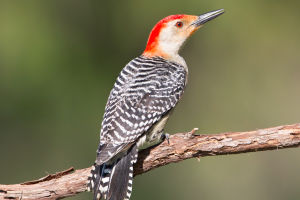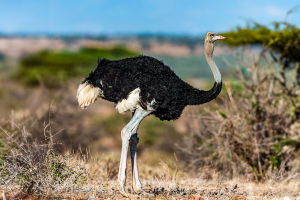Imagine you're on a safari in the Serengeti, and your guide points to some tiny dots slowly moving on the horizon. You lean out from your comfy safari vehicle to take a closer look.
At first, they look like ants in a line—but as your jeep speeds up and gets closer, those “ants” turn into towering creatures with tree-trunk legs and giant flapping ears.
You're now face to face with a herd of 30 African elephants, just 20 feet away. They're headed to the river for a drink, and your guide casually tells you, “Each one can drink up to 50 gallons of water a day—that's like a full bathtub!”
For the next hour, you drive alongside them in awe.
Meet the African Elephant
No safari is complete without seeing these massive creatures, often called the "Cadillacs of the Serengeti."
As one of Africa's “Big Five,” elephants are unforgettable. And hey, if you're going to see a lot of them, why not show up knowing some fun facts?
The World's Biggest Land Animal
No land animal is bigger than the elephant. With their massive size, they can reach treetops other animals can't, and their presence helps shape their environment in important ways.
Not Just One Type
There are two main kinds of elephants: African and Asian. African elephants have big ears shaped like the African continent, while Asian elephants have smaller, rounder ears.
African elephants live in open grasslands and forests, while Asian elephants stick to forests, grassy areas, and hills in Asia.
Spot the Differences
Besides the ears, African elephants usually have bigger, longer tusks. Asian elephants? Sometimes their tusks are smaller—or they don't have any at all. These differences come from how they've adapted to different environments over time.
The African Forest Elephant
Within the African species, there's a special kind called the forest elephant. These ones live in the rainforests of Central and West Africa. They're smaller, have straighter tusks, and rounder ears. Their darker color and slimmer shape help them move through thick forests.
They Never Forget
You've probably heard this one before—elephants have amazing memories. They can remember people, places, and even events from years ago.
This helps them find water and food when seasons change. It also helps them recognize family and stay connected within their herd.
Strong Family Bonds
Female elephants—called cows—live in tight-knit family groups led by the oldest female, the matriarch. She's the boss and guides the whole group.
Elephants show empathy, teamwork, and loyalty. They help each other, grieve their losses, and care for their young together. It's a true community.
The Mighty Trunk
An elephant's trunk is like a super-tool. It works like a nose, a hand, a straw, and even a trumpet. They use it to grab food, draw up water, and greet other elephants with a gentle touch.
Inside the trunk are thousands of muscles—so they can pick up something as small as a peanut or knock down a tree.
Would you want to see these gentle giants in the wild someday, Lykkers? If so, remember these facts when you're out there—you'll understand just how special elephants really are! 🐘✨


